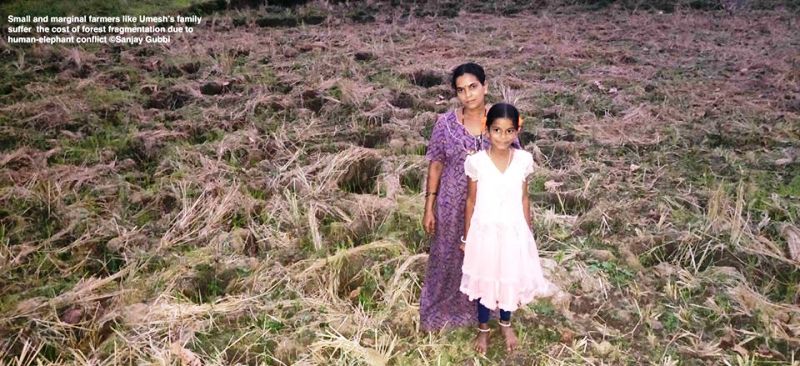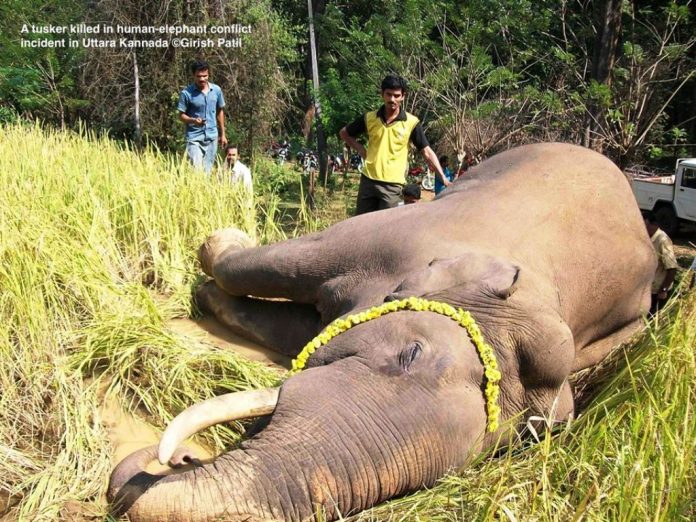
Malaria that was eradicated in Uttara Kannada in the 1950s encouraged migration and clearing of forests for agriculture. It may have been necessary at that time when food production was of prime importance for the country. However, this influx increased elephants raiding crops. In response, rewards were given to kill crop-raiding elephants. In this fashion large number of elephants were eliminated from Uttara Kannada and they survived in very small numbers in Dandeli Wildlife Sanctuary that was first notified as a protected area in 1956.
Now this last remnant population of 60-70 elephants in northern Western Ghats survive in the Kali Tiger Reserve and its surrounding areas. But the landscape is severely fragmented due to various developmental projects and human habitations. Due to this Elephants frequently get into conflict during the crop-harvesting season with farmers from over 100 villages in four talukas of Uttara Kannada.

A few weeks ago I was at Tenginageri village near Yellapura; the small paddy fields belonging to Umesh was completely eaten up by elephants. His family cultivated paddy for self-consumption. Now they will have to buy rice from the market, an additional cost on their small farming income. Such indirect effects of human-wildlife conflict are little understood. The HART will further fragment the elephants’ habitat leading to increase in conflict and it will be small and marginal farmers like Umesh who will bear the brunt of this conflict.
Conflict in Maharashtra: Except for a couple of stray incidents, Maharashtra didn’t have wild elephants. A group of seven elephants moved to Sindhudurg district of Maharashtra in 2002 however they soon returned to Karnataka. Since then there were sporadic movements of elephants into Maharashtra and coming back to Karnataka. But since 2005 they have become residents in Sindhudurg and Kolhapur districts.
This started human-elephant conflict in those areas. Both the forest department and local farmers didn’t know how to deal with elephants. It has put a heavy price on both human and elephant lives in that area now. Overall loss of habitat will not only affect our farmers but will also have an impact on neighboring areas as seen in the case of Maharashtra.

Our studies from the Western Ghats has showed a clear relationship between deforestation rates and increase in human-elephant conflict. This is very obvious in the districts of Hassan and Kodagu. A key solution to reducing conflict is to keep elephant habitats intact. We need to develop a comprehensive plan of infrastructure projects in the Western Ghats rather than ad-hoc decisions for every project. We need to demarcate areas where development would take priority and areas where wildlife conservation should take lead.
Those interested can read the freely accessible scientific paper on human-elephant conflict and deforestation
https://journals.sagepub.com/doi/full/10.1177/1940082919865959






































